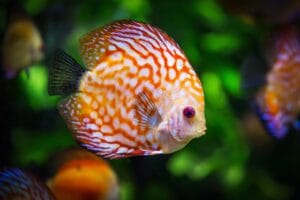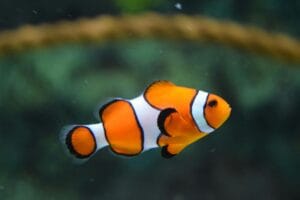fish tank setup for beginners

A fish tank setup is more than just a decorative addition to your home; it is the cornerstone of a thriving aquatic ecosystem. Proper setup ensures the health and well-being of your fish while minimizing long-term maintenance challenges. For beginners, however, this process can be daunting, as it involves numerous considerations and decisions. From selecting the right tank to understanding water quality, beginners must navigate a learning curve to create an ideal environment for their aquatic companions.
Table of Contents
Water Quality and Maintenance
Importance of Proper Fish Tank Setup
A well-planned fish tank setup promotes the physical health and emotional well-being of your fish. An optimal setup ensures that fish thrive in conditions that mimic their natural habitats, reducing stress and preventing diseases. Moreover, a balanced tank is easier to maintain and reduces the likelihood of water quality issues, algae growth, and fish loss.
Common Challenges Faced by Beginners
Beginners often encounter challenges such as selecting incompatible fish species, overestimating tank capacity, and neglecting critical steps like cycling the tank. Other common pitfalls include improper water quality management, insufficient equipment, and inadequate knowledge about fish care. Addressing these issues at the outset can significantly enhance the experience of owning a fish tank.
Understanding the Basics
What Is a Fish Tank and Why Is It Important
A fish tank, also known as an aquarium, is a controlled aquatic environment designed to house fish, plants, and other organisms. It serves not only as a habitat but also as a microcosm where biological, chemical, and physical processes occur. A well-maintained fish tank contributes to the aesthetic appeal of a space and offers a calming, therapeutic effect for its owners.
Types of Fish Tanks: Freshwater, Saltwater, and Brackish
Fish tanks are broadly categorized into freshwater, saltwater, and brackish setups. Freshwater tanks are the most beginner-friendly, requiring less equipment and maintenance. Saltwater tanks, while visually stunning, demand precise water chemistry and are best suited for advanced hobbyists. Brackish tanks fall between the two, requiring moderate salinity levels to accommodate species like mollies and puffers.
Choosing the Right Fish Tank
Factors to Consider When Selecting a Tank Size
Tank size is a critical factor in ensuring the health of your fish. Larger tanks offer more stable water conditions and accommodate a greater variety of species. Beginners should opt for tanks with a capacity of at least 20 gallons, as smaller tanks are prone to rapid fluctuations in water parameters.
Best Materials for Fish Tanks: Glass vs. Acrylic
Glass and acrylic are the two primary materials used for fish tanks. Glass tanks are scratch-resistant and maintain clarity over time, but they are heavier and more fragile. Acrylic tanks are lightweight and impact-resistant but prone to scratching. Your choice should depend on factors like durability, cost, and intended placement.
Placement Tips: Finding the Ideal Spot for Your Tank
Position your tank in a location that is free from direct sunlight, drafts, and vibrations. Ensure that the surface is level and capable of supporting the tank’s weight when filled. Proximity to electrical outlets is also crucial for powering equipment like filters and heaters. Essential Equipment for Your Fish Tank
Essential Equipment for Your Fish Tank
Understanding Filtration Systems and Their Importance
Filtration systems are the backbone of a healthy tank, removing waste, toxins, and debris. There are three types of filtration: mechanical, biological, and chemical. A good filtration system incorporates all three to maintain water clarity and quality.
Lighting Options and How They Affect Fish and Plants
Proper lighting enhances the tank’s aesthetic appeal and supports the growth of live plants. LED lights are energy-efficient and customizable, making them a popular choice. Avoid excessive lighting, as it can promote algae growth.
Heaters and Thermometers: Maintaining the Perfect Temperature
Consistent temperature is vital for the well-being of your fish. Use a reliable heater and thermometer to maintain the ideal temperature range for your chosen species. Sudden temperature fluctuations can stress or harm fish.
Air Pumps and Aeration: Do You Need Them?
Air pumps enhance oxygen exchange and create water movement. While not always necessary, they are beneficial in tanks with poor circulation or high oxygen demand. Bubbler decorations can also add visual appeal.
Preparing Your Tank Before Setup
How to Clean and Prepare a New Fish Tank
Before setting up, rinse the tank thoroughly with warm water to remove dust and residues. Avoid using soap or chemicals, as they can be harmful to fish. Inspect the tank for cracks or defects.
Cycling Your Tank: The Key to a Healthy Environment
Cycling establishes beneficial bacteria that break down fish waste into less harmful substances. This process typically takes 4-6 weeks and involves monitoring ammonia, nitrite, and nitrate levels. Patience during this phase is crucial to avoid harming the fish.
Substrate and Decorations
Choosing the Best Substrate for Your Fish
The substrate forms the foundation of your tank and impacts water chemistry and aesthetics. Gravel, sand, and specialized substrates are popular choices. Select a substrate that complements your fish and plants.
Safe and Stylish Decorations for a Natural Look
Decorations provide hiding spots and stimulate natural behaviors in fish. Opt for non-toxic ornaments and avoid overcrowding the tank. Driftwood, rocks, and caves are excellent options.
The Role of Live Plants in Your Fish Tank Setup
Live plants improve water quality by absorbing nitrates and producing oxygen. They also create a natural and serene environment. Choose hardy species like Java fern or Anubias for beginner-friendly options.
Selecting the Right Fish
Best Fish for Beginners: Easy-to-Care-For Species
Beginner-friendly fish include guppies, tetras, and bettas. These species are hardy, adaptable, and require minimal care. Research their specific needs before purchasing.
Understanding Compatibility and Avoiding Aggressive Fish
Ensure compatibility by choosing fish with similar temperaments and environmental requirements. Avoid mixing aggressive species with docile ones to prevent stress and injury.
Water Quality and Maintenance
Importance of Water Testing and Regular Monitoring
Regular water testing ensures that parameters like pH, ammonia, and nitrate levels remain within safe ranges. Invest in a reliable test kit for accurate readings.
How to Dechlorinate Water and Adjust pH Levels
Tap water contains chlorine and chloramines, which are harmful to fish. Use a water conditioner to neutralize these chemicals. Adjust pH levels gradually to avoid shocking your fish.
Routine Cleaning Practices for a Healthy Tank
Perform partial water changes weekly to maintain water quality. Clean filters and remove debris without disrupting beneficial bacteria. Avoid over-cleaning to preserve the tank’s ecological balance.
Feeding Your Fish
Selecting the Right Food for Your Fish Species
Fish require species-specific diets, including flakes, pellets, and frozen foods. Research dietary needs to provide balanced nutrition and prevent overfeeding.
How Often Should You Feed Your fish?
Feed your fish small portions once or twice daily. Remove undaten food to prevent water contamination. Monitor their behavior to adjust feeding schedules as needed.
Troubleshooting Common Issues
Cloudy Water: Causes and Solutions
Cloudy water can result from overfeeding, poor filtration, or bacterial blooms. Address the underlying cause and perform a water change to restore clarity.
Dealing with Algae Growth in Your Fish Tank
Algae growth is a common nuisance. Reduce light exposure, avoid overfeeding, and introduce algae-eating species like snails or plecos to control it.
Identifying and Treating Sick Fish
Monitor fish for signs of illness such as lethargy, discoloration, or unusual swimming. Quarantine-affected fish and treat them with appropriate medications or remedies.
Tips for Long-Term Success
Creating a Maintenance Schedule You Can Stick To
Establish a routine that includes water changes, equipment checks, and feeding. Consistency is key to maintaining a healthy tank.
Signs of a Healthy and Balanced Aquarium
A thriving aquarium features active fish, clear water, and minimal algae growth. Regular monitoring and adjustments ensure long-term success.
Conclusion
A successful fish tank setup for beginners requires careful planning, patience, and attention to detail. By following these steps, you can create a vibrant aquatic environment that brings joy and tranquility to your home. Start your journey today and discover the rewarding experience of fishkeeping.



